South Downs Walk – Lewes to Eastbourne: 26-27 October 2024
This weekend’s adventure started in Lewes. I’ve done chunks of the South Downs before, so the plan was to do a day of new stuff, and finish with a day walking the Seven Sisters.

A short walk from Lewes station are the remains of Cluniac St Pancras Priory. Built in 1081, this was the first Cluniac priory in the UK!




Don’t know what a Cluniac priory is? Me neither. This is what I found out:
In 910, William I, Duke of Aquitaine, and the Count of Auvergne got together and founded the Benedictine Abbey of Cluny as the Cluniac ‘motherhouse’. Importantly, they made a ruling that the monastery would be free from any local authority, lay or ecclesiastical interference, and answered only to the Pope. Although they tempered this Papal influence by stating that he wasn’t able to seize, divide or give the property to anyone else, and he also couldn’t appoint an abbot without the consent of the monks. How to make sure this never happened, with a curse of course. I looked it up and it sounds pretty bad:
“First of all he incurs the wrath of Almighty God, and God takes away his portion of the living from the earth and blots out his name from the book of life, and let him become a portion with those who said to the Lord God, depart from us, and with Dathan and Abiron, whom the earth swallowed up with its open mouth and swallowed up the living in the hells. Being restrained by sharp lashes, he escaped scarcely half alive: the other, however, struck by a nod from above, perished most miserably with rotting limbs and spreading worms”
With that taken care of, it was time to become the wealthiest and most opulent monastic houses in the Western world. They hired labourers to do all the hard work that was taken care of by monks in other houses, commissioned candelabras of solid silver, designed golden chalices with precious gems for their masses, and renounced the usual monkly diet of broth and porridge for roasted chicken, cheese and wine.
Not a huge surprise that the order spread like wildfire then!
This first instance of a Cluniac monastery in England came about when Pope Gregory the Great sent Augustine to England with relics of St. Pancras. St Pancras is patrion saint of children, jobs and health. But he also gets invoked for cramps, headaches, false witnesses and perjury, which feels a bit like Saintly mission creep to me, but I guess the supply is somewhat restricted!
It took Henry VIII to brave the curse, dissolve the monastery and dismantle it to what’s left here. This is a helpful diagram to show how sprawling the priory was back in the day.

Perhaps unsurprisingly, a large part of what remains are the toilet blocks. (I’d swerve these if I was dismantling a monastery for pieces too). There were only 100 monks living on the site, but they had 56 toilets, which struck me as a bit excessive until I realised that the monks only got short breaks between church services. There must have been a stampede!
After all that excitement it was a bit of a dull yomp to Rodmell: mud, boring fields, roads and a sewage works. I’m putting this stretch on the ‘do not walk again’ list.


I was excited to visit Monk’s House in Rodmell. Virginia and Leonard Wolf bought this house in 1919 for £700 and it was an important place for them and the wider Bloomsbury group. Virginia wrote her biggies here, including Mrs Dalloway, The Lighthouse, Orlando and The Waves (my favourite). Alas, it was shut when I arrived.
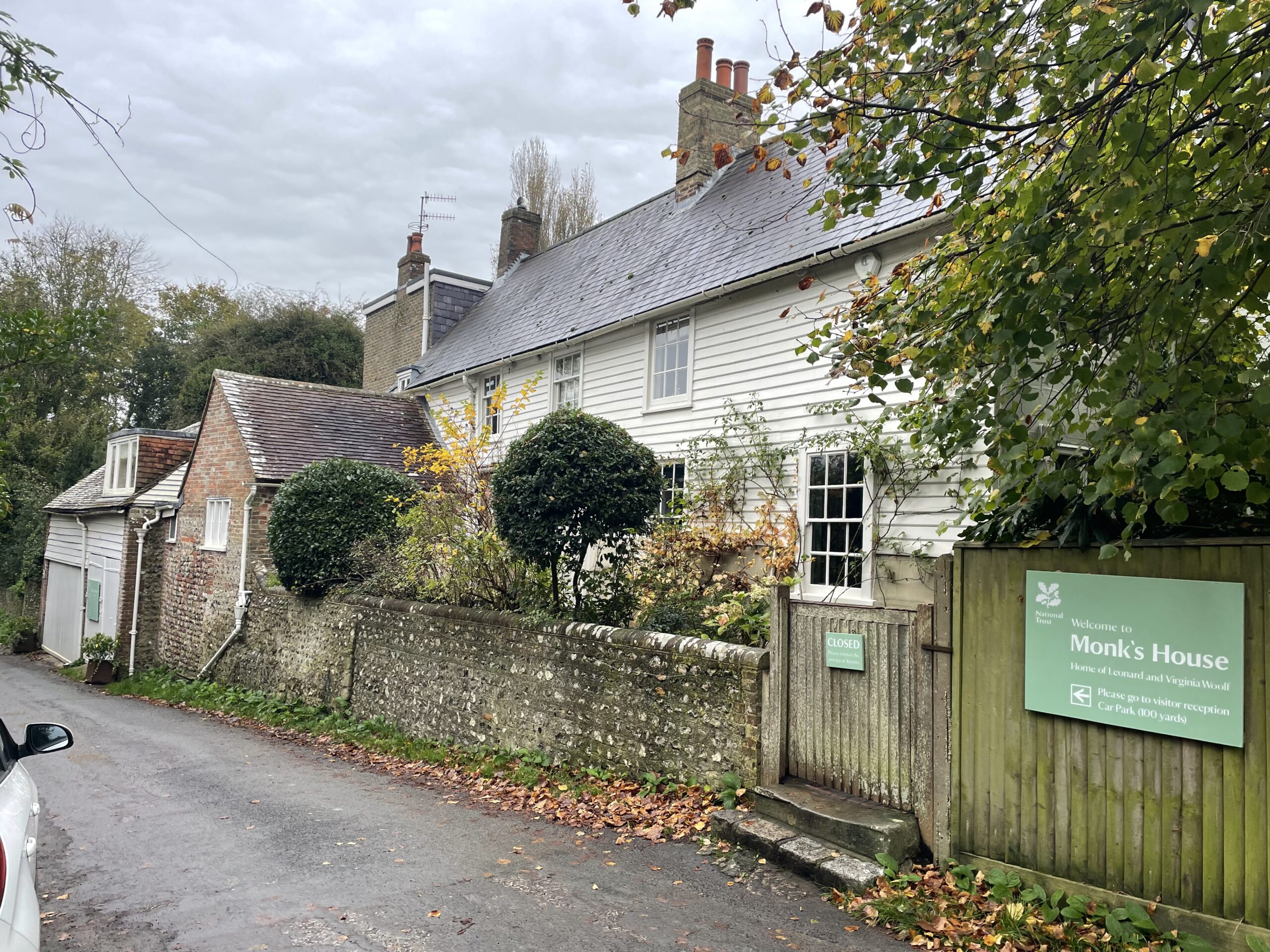

As I later crossed the River Ouse, I was conscious that this was the river that Virginia Woolf drowned herself in in 1941. She felt another instance of mental illness begin to grip her (it’s referred to simply as depression in everything I’ve read, but her suicide letter talks about ‘going mad again’ and beginning ‘to hear voices’) and made a decision that suicide was the ‘best thing to do’. It’s not a big river. In fact it’s the kind of river which you’d really have to be determined to drown yourself in; Virginia filled her pockets with rocks in order to complete her task.
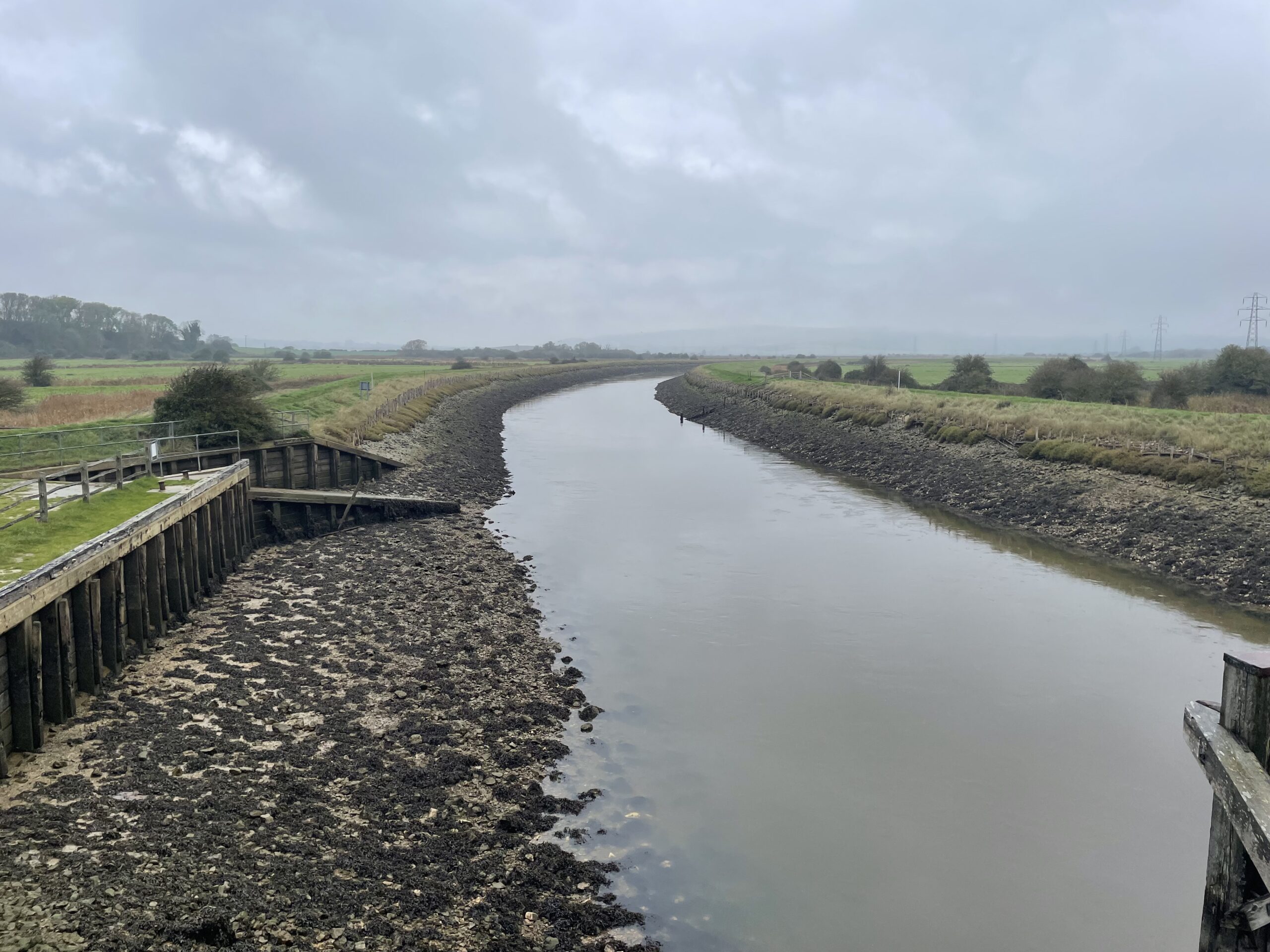
There is an incredibly moving piece of music by Max Richter in his Woolf Works from The Waves section, titled: Tuesday, which opens with Gillian Anderson reading Virginia’s suicide note. The letter is short, but what shines through is her love and absolution of Leonard, and the impossibility (for her) of living without being able to concentrate, in a world where she loses her alacrity with words. I listened to this as I crossed the Ouse, and I’m not afraid to say that I had a little moment…
Also in Rodmell is St. Peter’s church. It’s Norman, from the 12th century, quite pretty and has some nice stained glass windows. I’m sure this would excite people more into churches than me, but I took a couple of photos and left pretty sharpish.
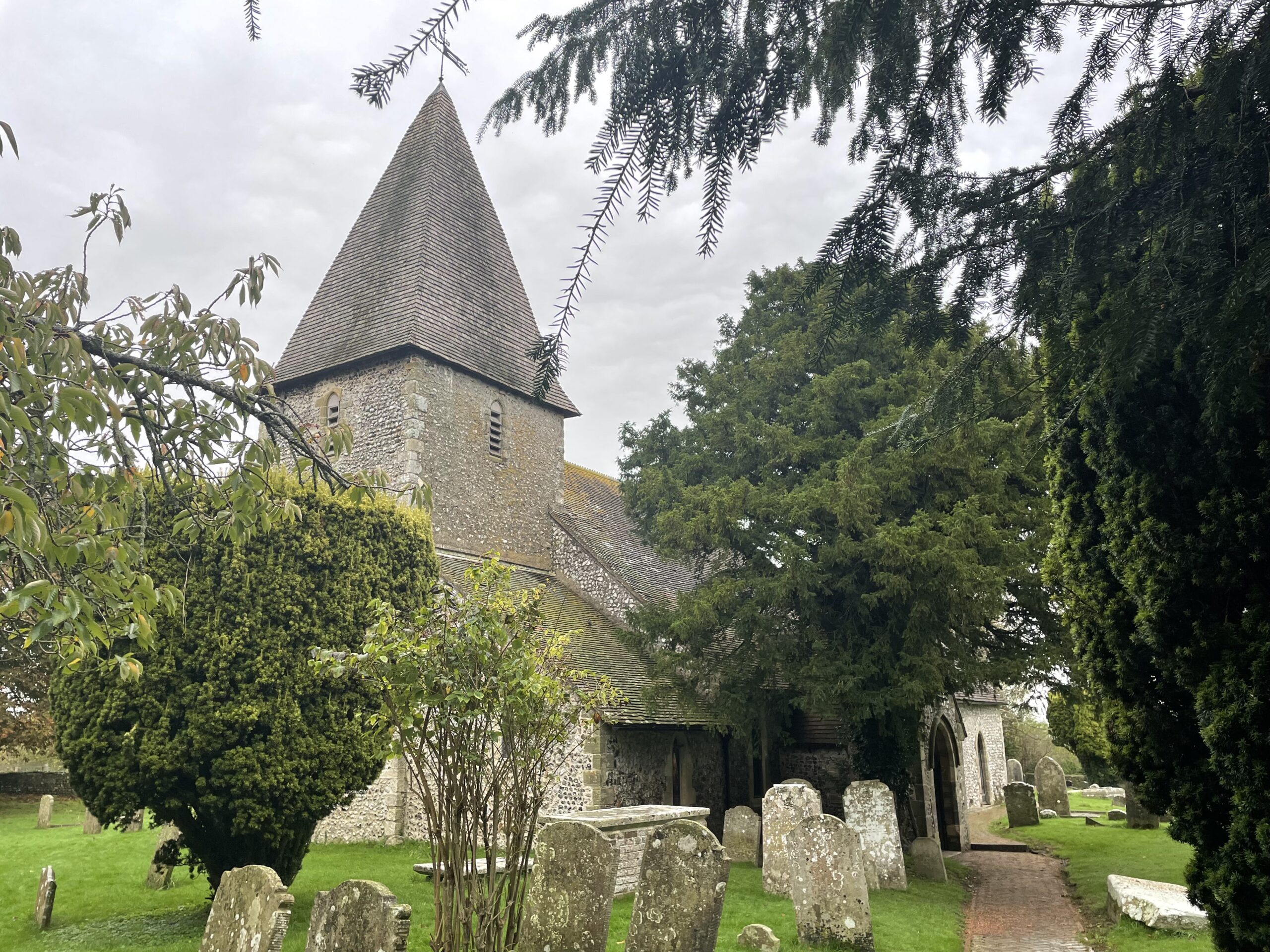


However, a short hop down the South Downs way from Rodmell is the small village of Southease that did have a church that I enjoyed. This church is Anglo-Saxon (just) originally built in either the late 10th or early 11thcentury. It’s now (also) called St Peter’s Church, but was only dedicated to him after the medieval period. It’s small and cosy, was empty when I arrived, and had a really calming feel to it, like walking into a ship’s hull and being cut off from the world.


It’s also got some original 12th century frescos that were whitewashed in the 1600s, but have been uncovered again since. In the peace of the church they seem to emerge from the walls like comforting ghostly shadows.

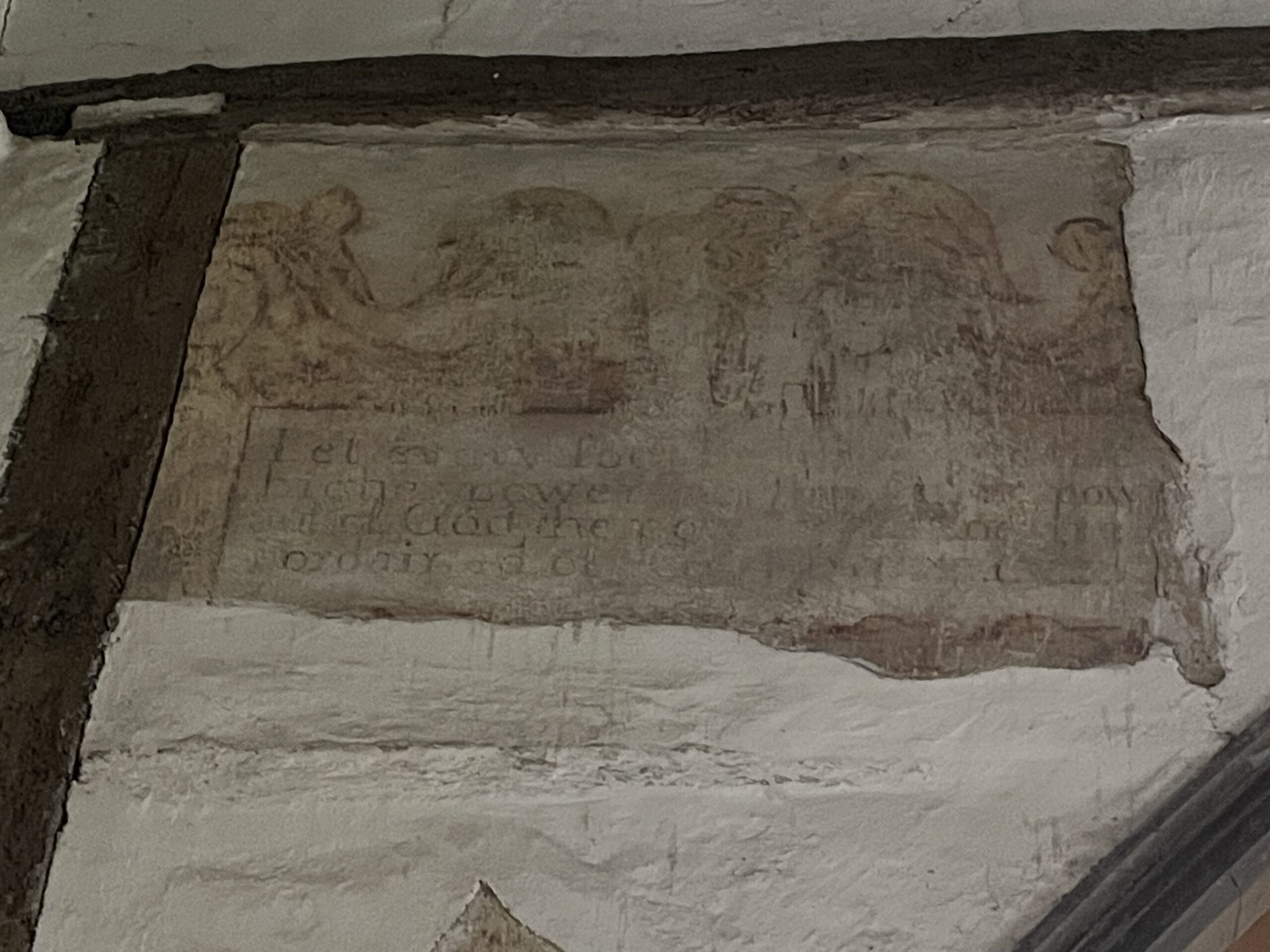

After Southease it was a welcome escape from civilisation to climb up onto the Downs at last for a 10km stretch to Alfriston. It was pretty misty up there, which ruined the views, but created an enjoyable atmosphere of seclusion.


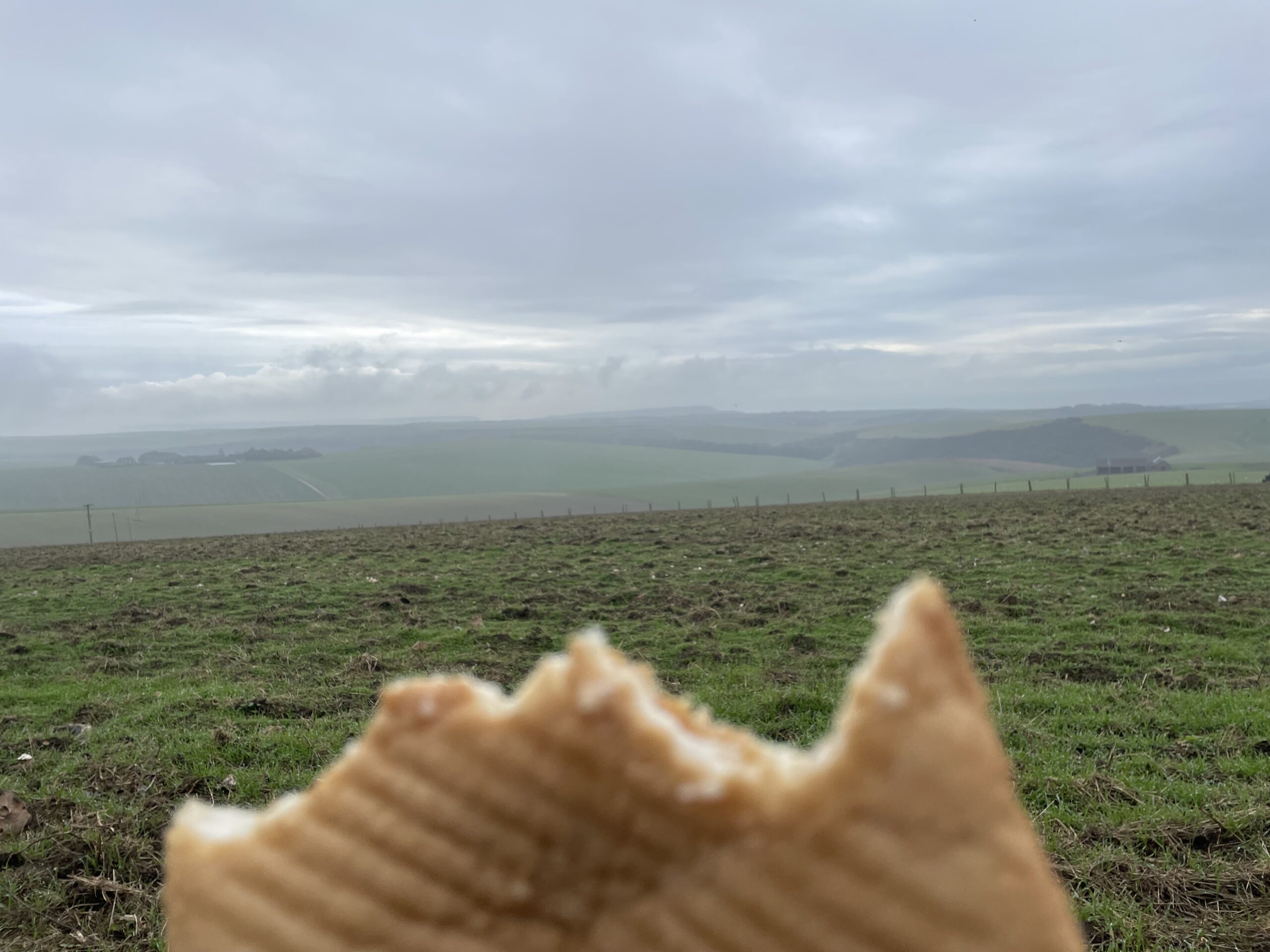
This stretch of the Downs is pock-marked with tumuli, many of which are the burial sites of Bronze-age Beaker folk (from about 4,400 years ago). These guys pretty much replaced the Neolithic population in Britain, and are so called because they were often found buried with ‘beakers’ like these (presumably so they didn’t go thirsty in the afterlife).

The burial mounds are pretty hard to spot now, after thousands of years of erosion and grave-robbing, unless someone helpfully puts a sign up next to them.
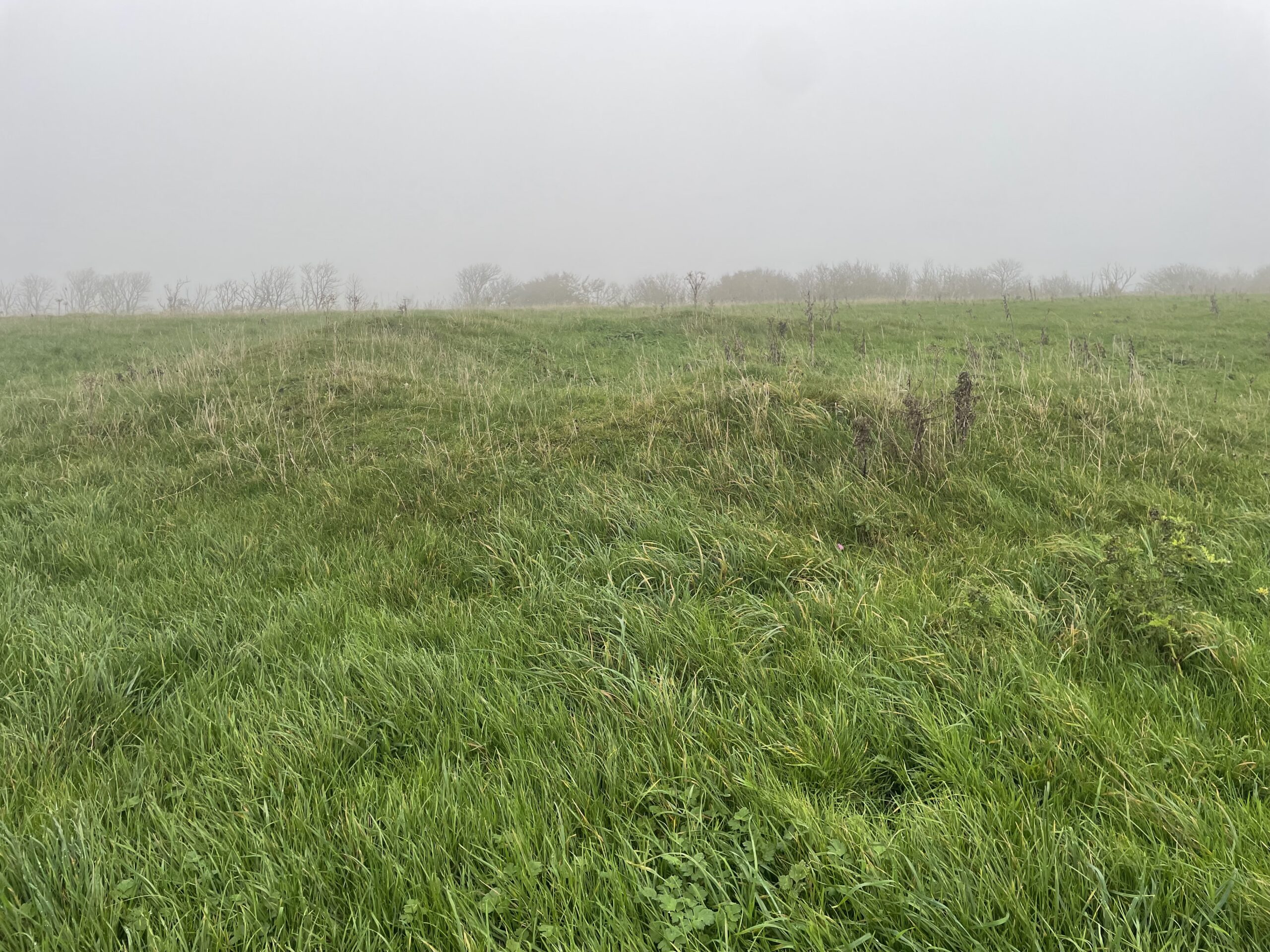


This stretch ended with a descent into the pretty bougie village of Alfriston. There’s a famous bookshop here called Much Ado Books, and despite the fact that I still had quite a way to go before sunset, I can’t resist a good bookshop. These guys have absolutely nailed how to run a bookshop in the Amazon era, turning the place into a book explorer’s paradise, keeping a packed schedule of events, running a social enterprise, and creating a space that you just want to languish in.

I loved the creative genre shelf labels…
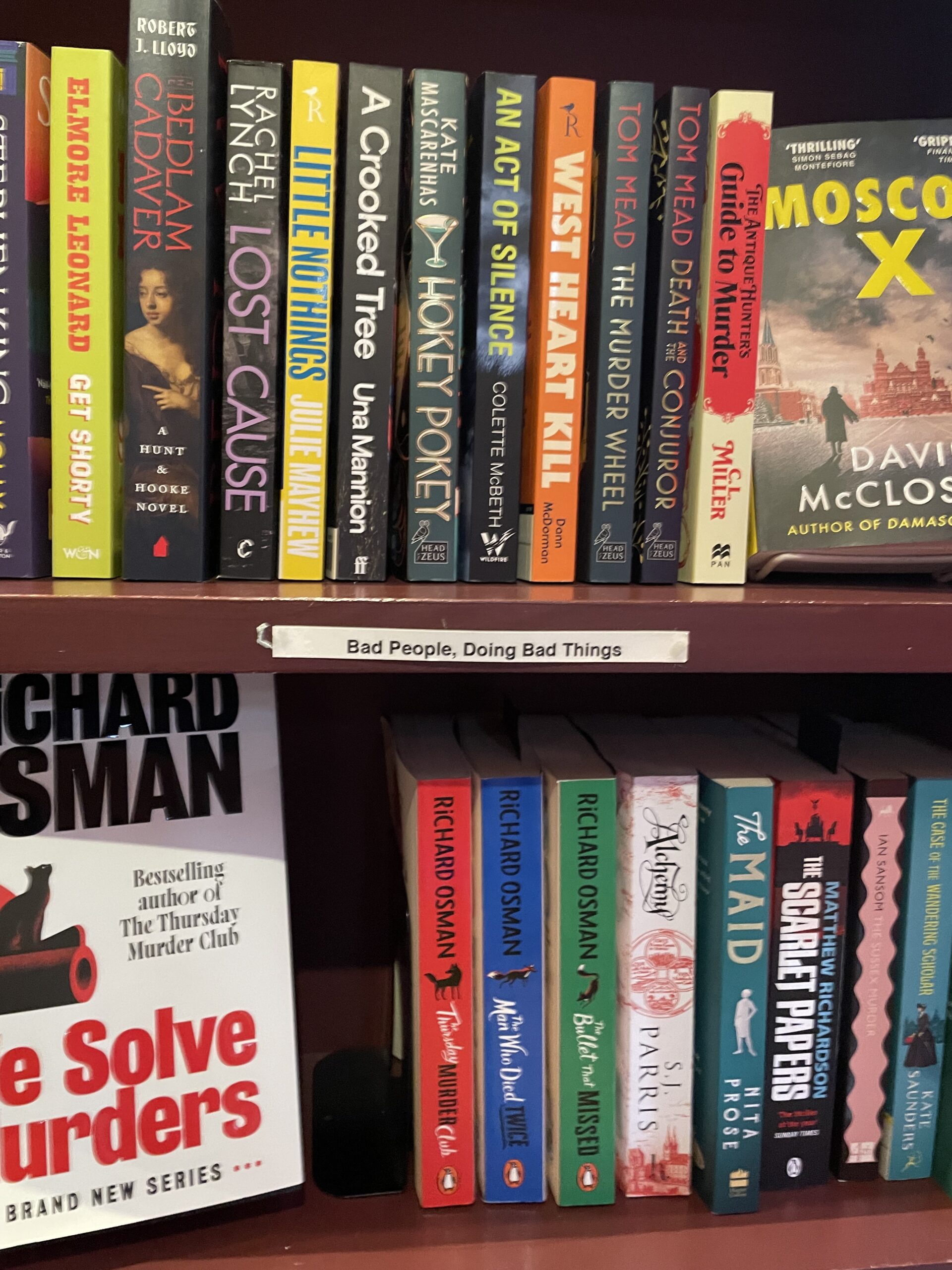


Too much to explore, too little time…



Sunset was due at 5.45pm and I’d spent way too long loitering, so coming out of Alfriston I had to put my foot on the gas and bomb it down the Cuckmere river to get through Exceat in order to find somewhere tucked away I could camp before it got dark.
But I couldn’t not take these photos en route though!

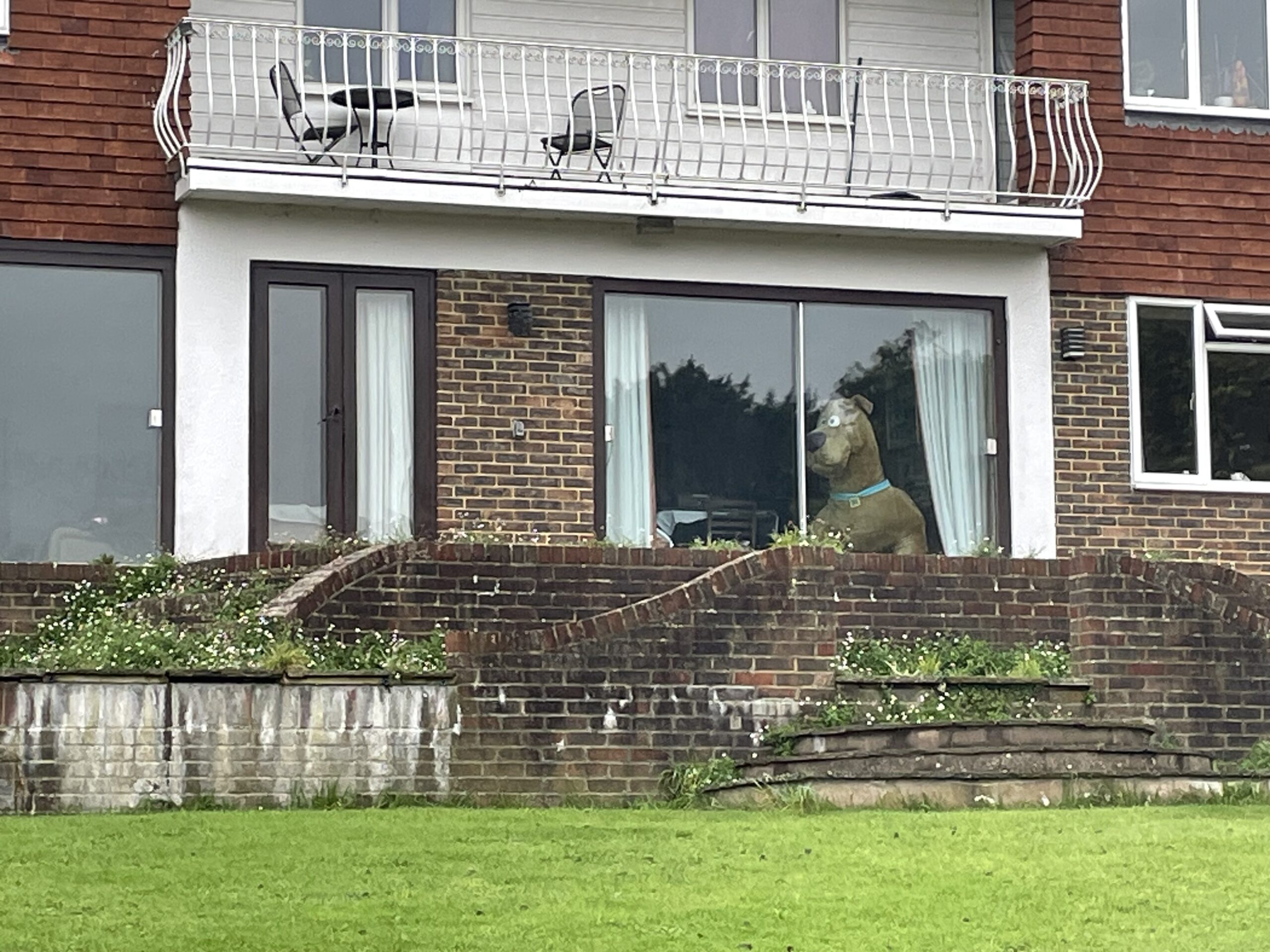
I made it, just as the sun was setting, and was rewarded with some beautiful views followed by a night of stars so clear I could see the silken mist of the Milky Way.



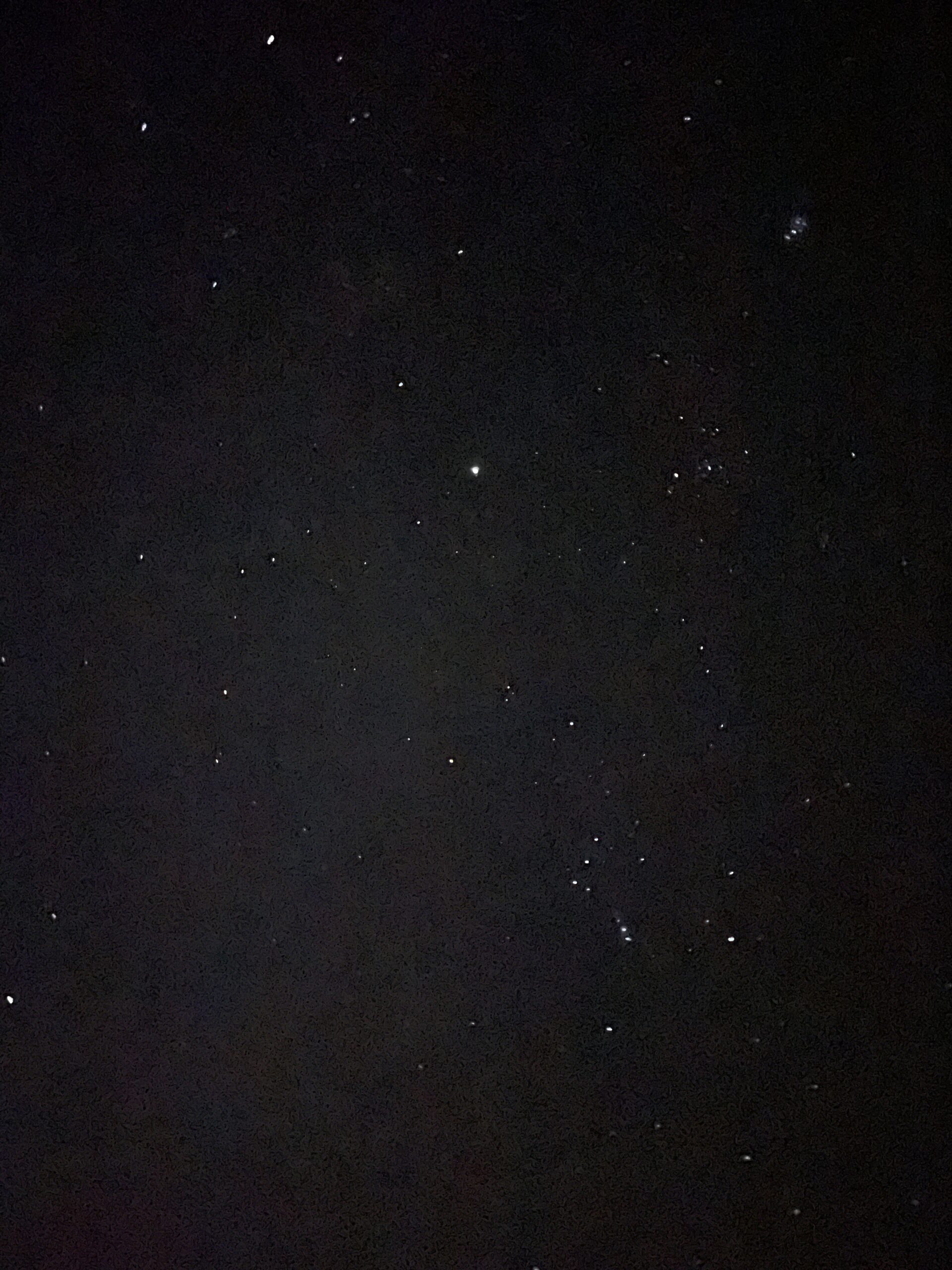
35km total on Day 1. And a decent (by tent standards) night’s sleep.
I woke up, breakfasted and packed up to a sunrise that promised an absolute beaut of a day ahead…


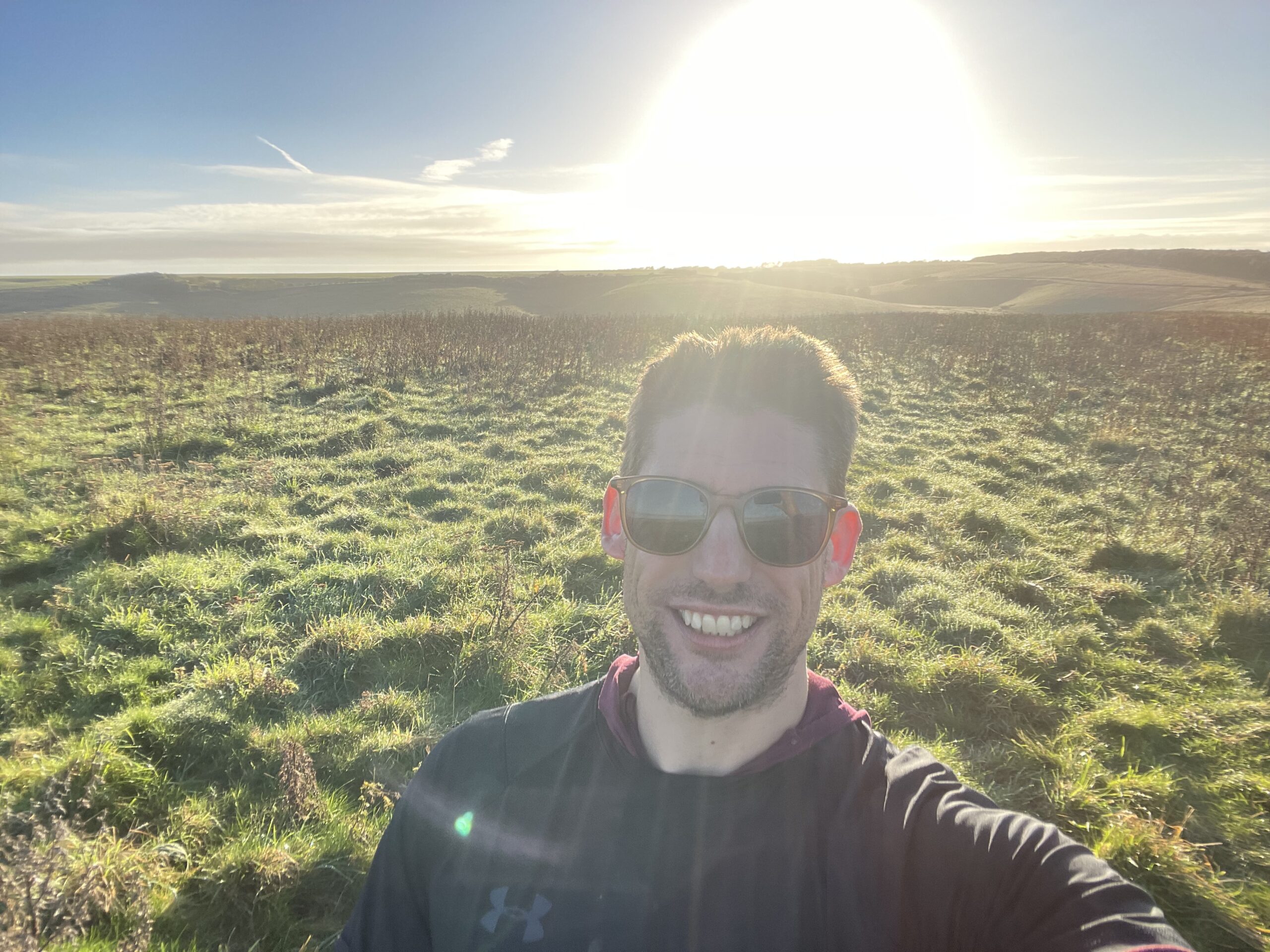

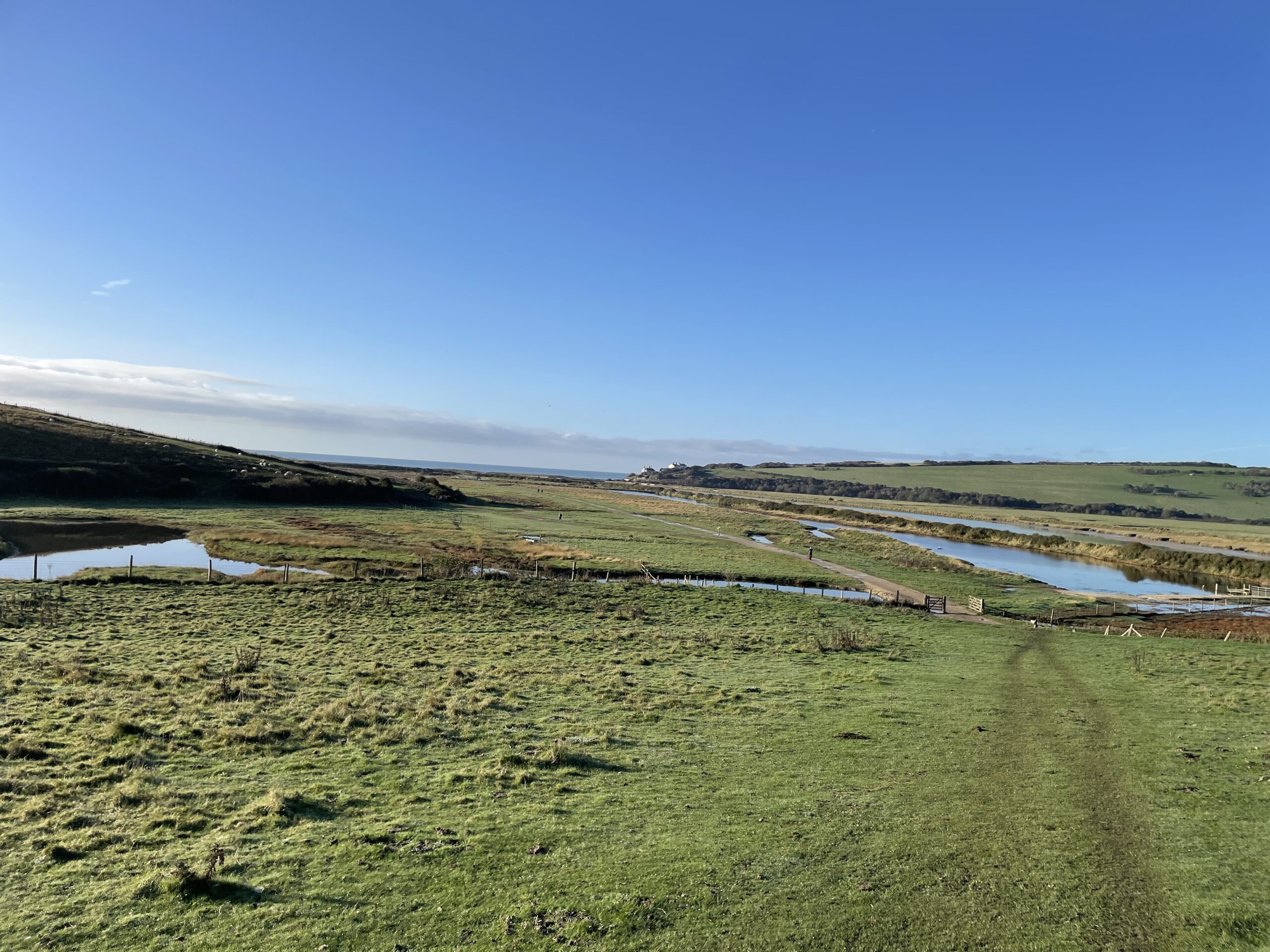

The Seven Sisters are a series of (seven!) chalk cliff peaks along the coastline from Cuckmere Haven to Beachy head. It’s a pretty special walk that I’ve done a few times before, but never in such unexpectedly good weather. I didn’t have too far to go today, so I took it slow and indulged the urge to take photos from pretty much every viewpoint.

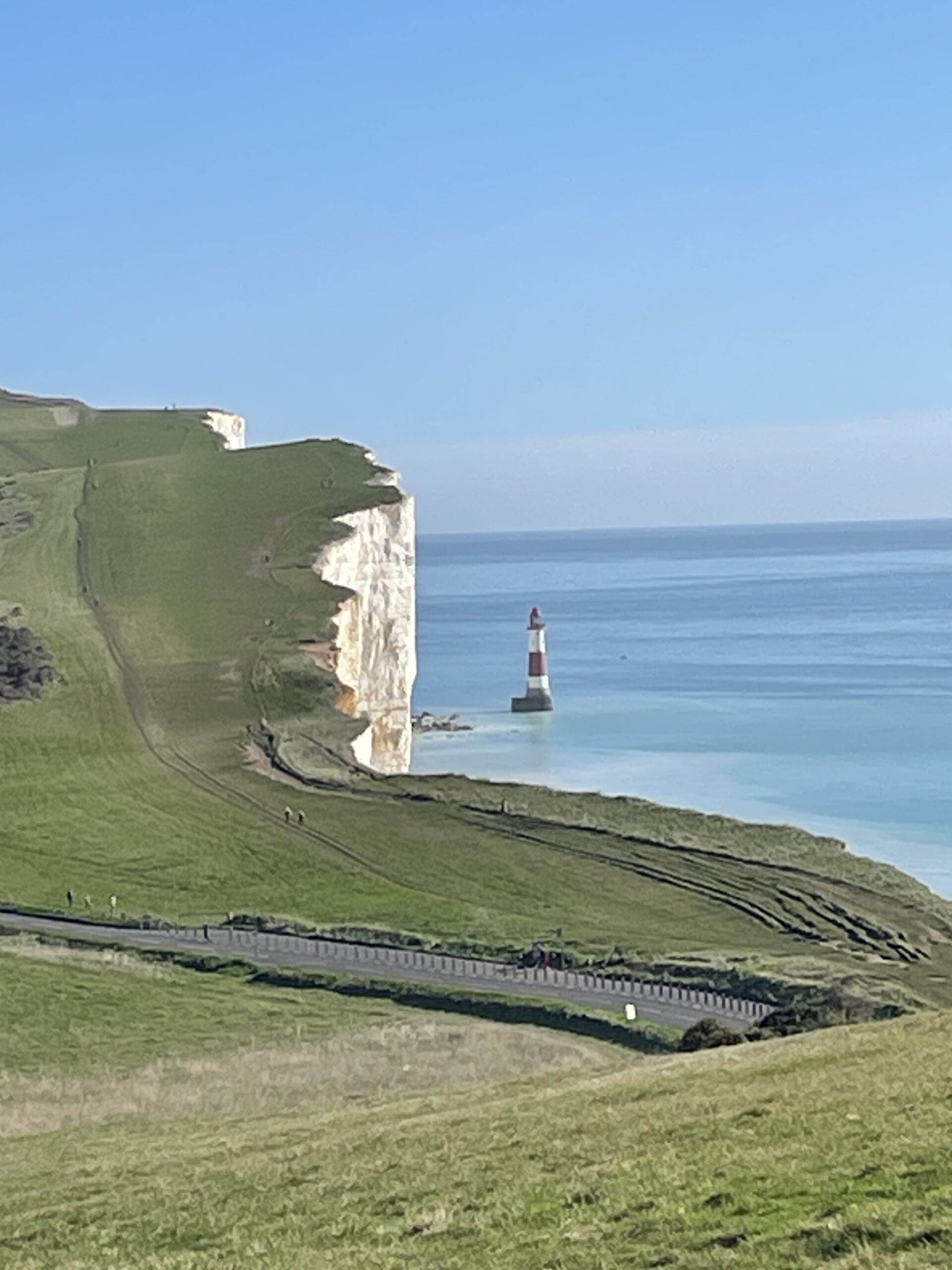



As I approached the Birling Gap I saw a line of runners streaming up the hill. Turned out I’d hit the Beachy Head Marathon weekend and they were running the half-marathon on the Sunday. It looked utterly brutal – the hills here are steep! I looked it up and the half-marathon comes with 488m of elevation gain. However, the previous day they’d run the ultra, which is 31.5 miles and 1,382m of elevation gain. I can’t even imagine the pain…



Three interesting things I saw in the course of the day:
- A red slug. Which Google reverse image search informed me was a Spanish Slug. It has the dubious honour of being the only land gastropod in DAISIE European Invasive Alien Species Gateway’s 100 worst alien species in Europe list and is also known as the ‘killer slug’ as it eats weakened and dead individuals from it’s own species. I think it looks pretty cute though…

2) A lying down horse. Now this might just be a massive miss on my part, but I don’t think I’ve ever seen a horse lying down like this before and was labouring under the belief that horses slept standing up. I got back on Google again, as I was a bit concerned the horse was sick, or worse. And it turns out that, whilst horses can and do sleep standing up, they can only achieve REM sleep lying down and need about 30-60 minutes of this a day. They tend to take turns with other horses to do this, for safety and survival, so I guess the other horse here is on watch.

3) I saw (and felt) loads of this stringy cotton stuff caught in the wind and flying around through the day. It feels like spider web when it hits you and seems like it must be some kind of natural seed transportation mechanism. Google reverse image search doesn’t really hit the nail on the head with this one, so if anyone reading this knows what it is please tell me!



Then it was a pretty ugly walk along the coast into Eastbourne, where I stopped at the pier to finish the rest of my lunch before jumping on the train back to London.


Just 16km covered on day 2. The Seven Sisters were stunning, but a little crowded with other walkers for my liking. I think I want to go somewhere a bit more remote for my next jaunt…